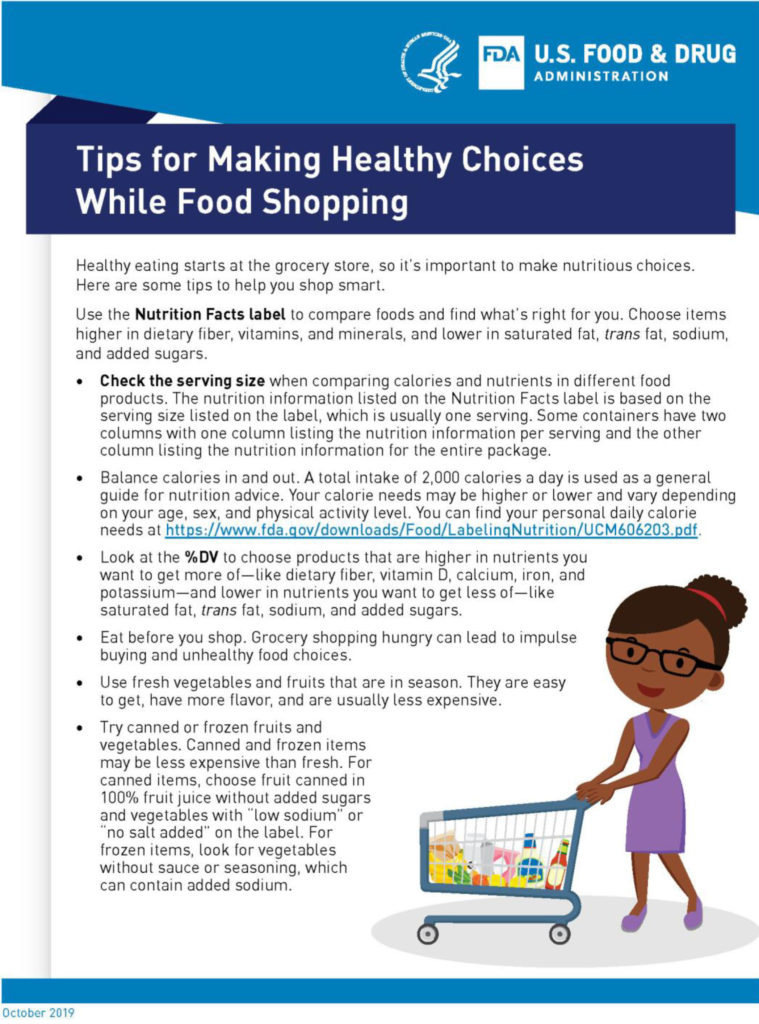Shelby Brawner, Extension Specialist
Healthy eating starts at the grocery store, so it’s important to make nutritious choices. Here are some tips to help you shop smart.
Use the Nutrition Facts Label to compare goods and find what’s right for you. Chose items higher in dietary fiber, vitamins, and minerals, and lower in saturated fat, trans fat, sodium, and add sugars.
- Check the serving size when comparing calories and nutrients in different food products. The nutrition information listed on the Nutrition Facts label is based on the serving size listed on the label, which is usually one serving. Some containers have two columns with one column listing the nutrition information per serving and the other column listing the nutrition information for the entire package.
- Balance calories in and out. A total intake of 2,00 calories a day is used as a general guide for nutrition advice. Your calorie needs may be higher or lower and vary depending on your age, sex, and physical activity level. You can find your personal daily calorie needs go to the FDA website.
- Look at the %DV to choose products that are higher in nutrients you want to get more of – like dietary fiber, vitamin D, calcium, iron, and potassium – and lower in nutrients you want to get less of – like saturated fat, trans fat, sodium, and added sugars.
- Eat before you shop. Grocery shopping hungry can lead to impulse buying and unhealthy food choices.
- Use fresh vegetables and fruits that are in season. They are easy to get, have more flavor, and are usually less expensive.
- Try canned or frozen fruits and vegetables. Canned and frozen items may be less expensive than fresh. For canned items, choose fruit canned in 100% fruit juice without added sugars and vegetables with “low sodium” or “no salt added” on the label. For frozen items, look for vegetables without sauce or seasoning, which can contain added sodium.

